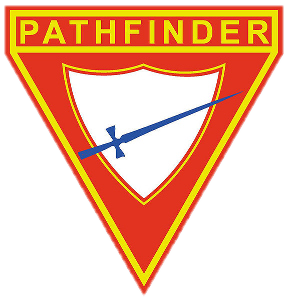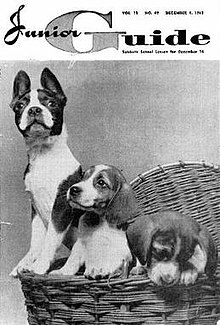
The Seventh-day Adventist Church (SDA) is an Adventist Protestant Christian denomination which is distinguished by its observance of Saturday, the seventh day of the week in the Christian (Gregorian) and the Hebrew calendar, as the Sabbath, its emphasis on the imminent Second Coming (advent) of Jesus Christ, and its annihilationist soteriology. The denomination grew out of the Millerite movement in the United States during the mid-19th century and it was formally established in 1863. Among its co-founders was Ellen G. White, whose extensive writings are still held in high regard by the church.

James Springer White, also known as Elder White, was a co-founder of the Seventh-day Adventist Church and husband of Ellen G. White. In 1849 he started the first Sabbatarian Adventist periodical entitled The Present Truth, in 1855 he relocated the fledgling center of the movement to Battle Creek, Michigan, and in 1863 played a pivotal role in the formal organization of the denomination. He later played a major role in the development of the Adventist educational structure beginning in 1874 with the formation of Battle Creek College.

The Pathfinder Club, or simply Pathfinders, is a department of the Seventh-day Adventist Church (SDA), which works specifically with the cultural, social and religious education of children and teens. Children 10 years and older are eligible to become members of the club.

John Nevins Andrews was a Seventh-day Adventist minister, the first official Seventh-day Adventist missionary, writer, editor, and scholar. Andrews University, a university owned and operated by the Seventh-day Adventist church, is named after him.
Arthur Stanley Maxwell (January 14, 1896 – November 13, 1970), otherwise known as Uncle Arthur, was an author, editor, and administrator of the Seventh-day Adventist Church.

The Seventh-day Adventist Church holds a unique system of eschatological beliefs. Adventist eschatology, which is based on a historicist interpretation of prophecy, is characterised principally by the premillennial Second Coming of Christ. Traditionally, the church has taught that the Second Coming will be preceded by a global crisis with the Sabbath as a central issue. At Jesus' return, the righteous will be taken to heaven for one thousand years. After the millennium the unsaved cease to exist as they will be punished by annihilation while the saved will live on a recreated Earth for eternity.
Sabbath School is a function of the Seventh-day Adventist Church, Seventh Day Baptist, Church of God (Seventh-Day), some other sabbatarian denominations, usually comprising a song service and Bible study lesson on the Sabbath. It is usually held before the church service on Saturday morning, but this may vary.

The Review and Herald Publishing Association was the older of two Seventh-day Adventist publishing houses in North America. The organization published books, magazines, study guides, CDs, videos and games for Adventist churches, schools and individual subscribers. It also printed and distributed the Adventist Review magazine. In 2014 the Review and Herald Publishing Association was absorbed by its sister publisher, Pacific Press Publishing Association but maintains its board and administrators. The Maryland publishing house closed and some of its personnel and assets relocated to PPPA, in Nampa, Idaho.
Signs of the Times is a monthly magazine originally published by Pacific Press, a Seventh-day Adventist publishing house. Signs presents articles that are considered to be helpful in assisting readers to live in modern society. The magazine focuses on life's-style issues, health articles and Christian devotional and other religious articles. From its historical roots, the magazine emphasizes the second coming of Christ to this earth and living such lives so as to be able to meet Jesus at His second coming.
Signs Publishing Company is a Seventh-day Adventist publishing house in Warburton, Victoria, Australia.
Denton Edward Rebok (1897–1983) was a Seventh-day Adventist educator and administrator. Born in Pennsylvania, he served the denomination for 44 years. He spent 23 years as a missionary in China. While there he founded the China Training Institute, a junior college located in the town of Qiaotou in northern Jiangsu province, about 160 miles from Shanghai and 30 miles from Nanjing, in 1925. He taught at Washington Missionary College, La Sierra College, was president of Southern Missionary College also Dean of the Seventh-day Adventist Theological Seminary. He served briefly as chair of the Ellen G. White Estate board of trustees in 1952, and gave two presentations about Ellen G. White at the 1952 Bible Conference. He authored Believe His Prophets, an apologetic for the prophetic gift of Ellen White.

Robert Howard Pierson was a president of the General Conference of Seventh-day Adventists during the 12 1/2-year period June 16, 1966, to January 3, 1979. While in the line of duty, Pierson served in North America, Asia and Africa. He interacted with 3 U.S. Presidents and the Presidents or Prime Ministers of 8 foreign countries, plus many governors, mayors, and other governmental dignitaries. He received an Honorary Doctor of Divinity degree from Andrews University, Berrien Springs, Michigan in the United States. As of 2018, Pierson is the third longest-serving church president after A. G. Daniels, and James Lamar McElhany.
Nathan G. Brown is a Christian author and editor. Brown is the "book editor" for Signs Publishing Company, based near Melbourne, Victoria, Australia.
William Warren Prescott (1855–1944) was an administrator, educator, and scholar in the early Seventh-day Adventist Church.
Hans Karl LaRondelle was a respected Seventh-day Adventist theologian; a strong proponent of the gospel and salvation by faith alone. In a 1985 questionnaire of North American Adventist Theology lecturers, LaRondelle tied for fourth place among the Adventist authors who had most influenced them, and was number one amongst the under 39 age group. He died March 7, 2011.
Insight, successor to The Youth's Instructor, was a weekly magazine designed for Seventh-day Adventist young people, published from 1970–2017 by Review and Herald. It was described as one of the "most important" Adventist magazines.

Chapel Music, formerly Chapel Records is a record label, currently in Nampa, Idaho that releases religious music. The label was founded in the late 1940s and still releases several CDs each year. It is the long-standing official recorded music publisher of the Seventh-day Adventist Church. Among the artists who have recorded for Chapel are The King's Heralds, Del Delker, The Heritage Singers, Wintley Phipps, and Roy Drusky.

Roswell Fenner Cottrell was a preacher, counselor, writer, hymnist and poet who came from a family of Seventh Day Baptists. He was the son of John Cottrell (1774–1857) and Mary Polly Stillman (1779–1852) After joining the sabbatarian Adventists who eventually organized the Seventh-day Adventist Church, he became one of their leading advocates.
San Jose Adventist Academy Inc. (SJAA) is a private non-sectarian institution in San Jose, Occidental Mindoro, Philippines. It was founded in 1996 under the Adventist Education. Also its partner school, The San Jose Adventist Elementary School (SJAES), formerly known as San Jose Adventist School (SJAS). It is part of the Seventh-day Adventist Church's worldwide educational system. All students are called "Academians".










